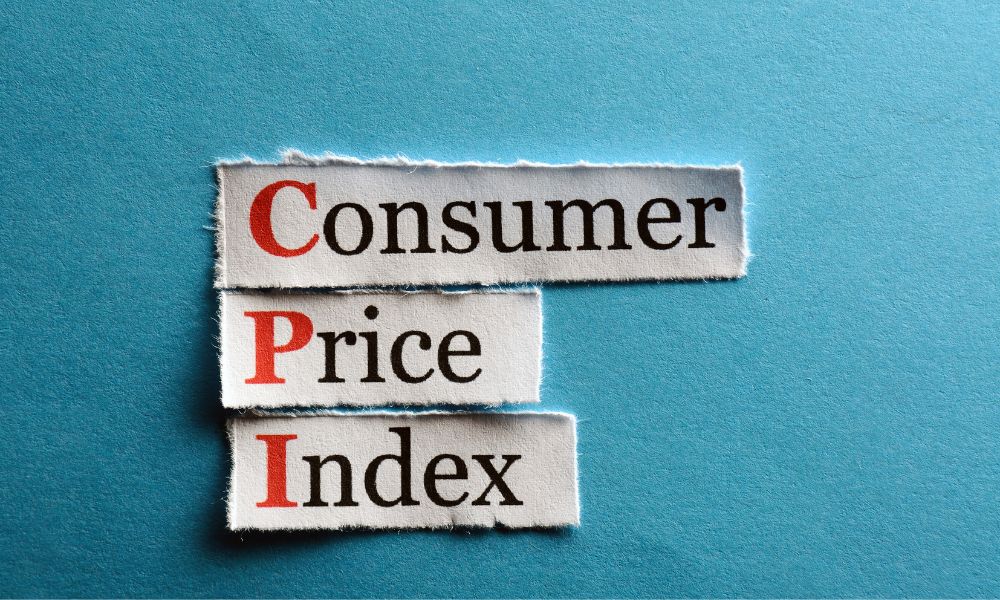When it comes to investing, one of the most crucial metrics you need to understand is the Consumer Price Index (CPI) data. With the upcoming CPI release this week, it’s important to grasp what this data is, how it impacts the market, and why it matters to your investment strategy. Let’s explore CPI in depth, providing you with actionable insights to ensure you can make informed decisions.
What is CPI Data?
The Consumer Price Index (CPI) measures the average change over time in the prices paid by urban consumers for a basket of goods and services. This basket includes essentials like food, clothing, shelter, and medical care. Produced by the Bureau of Labor Statistics (BLS), CPI is a fundamental indicator used to assess inflation and the cost of living.
Why should you care? CPI data affects your purchasing power and can influence interest rates, wages, and economic policy. Understanding CPI helps you anticipate changes in the market and adjust your investments accordingly.
An investor who paid close attention to the rising CPI data in 2021 and early 2022 could have foreseen the potential for high inflation and taken steps to prepare their portfolio. As the CPI consistently reported higher-than-expected increases, it signaled that the Federal Reserve would likely need to aggressively raise interest rates to control inflation. By recognizing this early on, an investor could have repositioned their holdings, seeking inflation-hedging assets like commodities or Treasury Inflation-Protected Securities (TIPS), while reducing exposure to interest-rate sensitive sectors that typically underperform in a high inflation, high interest rate environment.
Why the Upcoming CPI Release Matters
The upcoming CPI release is a critical event for retail investors. As mentioned above, in the past couple of years, CPI data revealed persistent inflation, leading the Federal Reserve to raise interest rates multiple times. This directly impacted the stock market, particularly sectors like technology and real estate, which are sensitive to interest rate changes. As of now, the inflation rate remains above the Fed’s target of 2%, and the Fed’s actions will depend on the latest CPI data.
CPI Data and Consumer Behavior
Understanding CPI data can also provide insights into consumer behavior. Inflation affects how consumers spend their money, which in turn impacts various sectors differently. For instance, during periods of high inflation, consumers may cut back on discretionary spending and focus more on necessities.
In late 2023, as inflation remained high, there was a noticeable shift in consumer spending patterns. Companies in the consumer staples sector, like Procter & Gamble and Coca-Cola, saw increased demand for their products, while luxury goods and discretionary items experienced a slowdown. Recognizing these patterns can help you make informed decisions about which sectors to invest in.
Actionable Insights for Your Investments
Now that you understand what CPI data is and its importance, let's dive into specific strategies to use this information to your advantage:
Predicting Market Movements: The Federal Reserve closely monitors CPI data to set monetary policy. If the CPI indicates rising inflation, the Fed may increase interest rates, which can lead to lower stock prices in interest-sensitive sectors like technology and real estate. By anticipating these moves, you can adjust your portfolio to mitigate risks. For example, during the rate hikes in 2023, many investors shifted their focus to more stable sectors such as consumer staples and utilities.
Sector Rotation: CPI data can signal shifts in consumer behavior. For instance, if the CPI shows increased spending on essentials, you might consider investing in consumer staples or healthcare sectors, which tend to be more resilient during inflationary periods. In 2023, companies like Procter & Gamble and Johnson & Johnson performed well despite high inflation, making them attractive investments.
Inflation Hedging: Rising inflation can erode the value of your cash holdings. To hedge against inflation, allocate a portion of your portfolio to assets that perform well in inflationary environments, such as commodities, real estate, or TIPS. In the past year, many investors turned to gold to protect against rising inflation.
Investment Timing: Use CPI data to time your investments. If the data suggests a cooling inflation trend, it might be a good time to invest in growth stocks that typically perform better in lower inflation environments. For example, in early 2024, as CPI data indicated a slowdown in inflation, technology stocks like Apple and Microsoft saw renewed investor interest, leading to significant price increases.
Interpreting CPI Data: It's crucial to understand how to interpret CPI data effectively. Look at month-over-month and year-over-year changes, and differentiate between core CPI (which excludes volatile food and energy prices) and headline CPI. Be aware of potential data anomalies or revisions that could affect your analysis. For instance, the COVID-19 pandemic led to temporary data collection challenges for the Bureau of Labor Statistics, resulting in some unusual fluctuations in CPI readings during 2020 and early 2021. Natural disasters or supply chain disruptions can also cause short-term distortions in the CPI data for certain categories. Following the hurricane season in late 2023, volatile energy and food prices skewed the headline CPI number higher for a few months, even though core inflation remained relatively contained. It's also important to note that methodological changes to the CPI calculation, such as updates to the basket of goods and services or weighting adjustments, can sometimes lead to revisions that make historical comparisons less straightforward.
Limitations and Risks: While CPI is a valuable indicator, it's essential to acknowledge its limitations. The basket of goods used may not accurately reflect your personal spending patterns, and there can be regional variations or substitution bias. For instance, the CPI assumes a fixed basket of goods, but in reality, consumers may substitute cheaper alternatives when prices rise. If the price of beef increases, some households may switch to chicken, mitigating the actual inflation impact on their food budget compared to what the CPI suggests. Additionally, the basket of goods in the CPI may not accurately capture rapidly evolving consumer trends or new product categories. The rise of subscription services, streaming entertainment, and alternative mobility options like ridesharing are just a few examples of evolving consumer behaviors that may not be fully reflected in the CPI calculations.
Conclusion
Understanding CPI data is more than just knowing a number; it's about interpreting the broader economic trends and making informed investment decisions. By keeping an eye on the upcoming CPI release, you can anticipate market movements, adjust your portfolio, and capitalize on the trends. However, investing based on CPI data carries risks, so it's crucial to practice proper risk management techniques like diversification and stop-loss orders to manage portfolio volatility during periods of high inflation.
Keep staying informed and proactive, and you'll be better prepared to navigate the complexities of investing and trading.
Happy investing!
Want These Types of Insights at Your Fingertips so You Can Win More Trades?
Use VectorVest to analyze any stock free. VectorVest is the only stock analysis tool and portfolio management system that analyzes, ranks and graphs over 18,000 stocks each day for value, safety, and timing and gives a clear buy, sell or hold rating on every stock, every day.
Before you invest, check VectorVest! Click here to ANALYZE ANY STOCK FREE and see our system in action!










Leave A Comment